On Valentine’s Day 2012 Paul Besley went for a winter’s walk on Dow Crag in the Coniston Fells.
Heading back to the valley he found his way obstructed by a large snow cornice so backtracked to Brim Fell to find an alternative route down.
Half an hour later he awoke on his back, in snow, with little recollection of how he got there. Then he realised how serious his injuries were: his scalp was detached; his skull was fractured, as were his leg, ankle, ribs and shoulder.
That he is still here to tell the tale is partly down to luck; mainly down to the skill of Coniston Mountain Rescue Team and the medical staff who treated him, but also due to his ability to summon help and keep himself alive until help arrived.
Grough reported the bare facts of the story three years ago, but the brief story gives no real hint of the extent of injuries a massive fall can cause.
His horror experience prompted him to put something back into the mountain rescue community and he is now a member of the Woodhead team in West Yorkshire.
This Paul’s story which he hopes may help others survive if they are unfortunate enough to have a major accident on the mountain.
It’s snowing hard here today. I had thought of getting out into the Upper Derwent Valley to recce a route for Sunday, got dressed to have fun in the snow, but watching the opposite side of the road disappear in a curtain of white snow caused me to pause for thought.
I might be able to get out, early in the day and with energy levels high and snow on the roads still a bit mushy. But what about later, when snow and cold has sapped energy levels and the roads have become impassable. Would I get back?
In England we do not get that much snow so when it comes the excitement of getting to play in it can be a real pull. All that new kit, hardly used; all those techniques desperately waiting to be tried. It’s a very tough decision to decide not to proceed; an even harder one to make if it means turning back. The winter press is filled with stories of people who never returned home. They had no intention, I am sure, of the day ending that way, but minute incremental mistakes can and often do lead to disaster.
No one sets out to have an accident and it is very rarely down to stupidity. Ignorance and naïveté can play a major factor in winter. Take Bleaklow in the Peak District national park. A mass of peat groughs designed to test any navigator, with thick bog and few landmarks for orientation. Yet, it is just 30 minutes’ walk from a major trans-Pennine route, which on a bad day you can hear, and stand in the right area, you can see. What can possibly go wrong walking here?
Yet people do become disoriented, injured, lost. That’s when the day out walking can change. Little by little, the situation can become one of survival against the odds. Sounds ridiculous doesn’t it, but it happens all over the country.
You do not have to be a novice to get into difficulty. There are numerous reports of well equipped walkers, climbers and mountaineers becoming stranded either through injury, bad luck, weather, error, or as often as not a combination of all of these. So if you are unfortunate enough to find yourself in a situation where you need help what can you do to not make the situation worse, especially in winter.

Paul is now a member of Woodhead MRT
I am not an expert in outdoor survival. I do have 40 years’ experience in walking all around the UK in all seasons. I am a national-park ranger, walking guide and member of mountain rescue. I also suffered a life-threatening accident and lived to tell the tale due to the skills and courage of the women and men of Coniston Mountain Rescue and enough knowledge that helped me stay alive long enough for them to rescue me.
So these are my thoughts on what will help an individual if they find themselves in need of rescue.
Read what mountain rescue recommend.
Think, think, think
The decision today not to venture out was the right one even if, as I type this, the sun is shining and the sky is blue. So making a choice not to go or change the plan to a local route within walking distance is a good start. If you do decide to go and the weather deteriorates to a point where a little voice in your head starts to sound a bit panicky, stop; think objectively; think what may happen; play the film to the end and seriously consider turning around.
Who knows where you are?
If the weather is fine and no signs of calamity are showing, one of the essential things you can do, probably the most critical thing, is to leave details of your day with someone. A route card sounds such an amateurish thing to do for an experienced hill person, but it can save a life.
I regained consciousness after falling a long, long way down a rock face and lying in deep snow for 30 minutes. I was able to raise my own alarm; I was lucky. But I also had left a route card with the manager at Holly How YHA who acted immediately I had not returned by the time I had stated and also raised the alarm.
Had I not come round, this one action would probably have saved my life. I had increased my margin of survival.
Equipment
Winter walking requires much more kit and kit that you are comfortable using. But the kit that will keep you alive and help rescuers may not be high on your list of priorities when all the excitement of getting out there is all consuming.
First aid
If you can get yourself to safety with the use of a first aid kit then you probably do not need that much help. The first aid kit can help in minor injuries, but in a survival situation is probably not much use if you are on your own. You can use it to stop bleeding, strap a broken bone, give some basic pain relief, but that’s about it.
In winter if your injuries mean you simply cannot get off the hill under your own power or with the help of friends then equipment priorities need to change. Similarly, if you are lost, the same applies.
Phones
Let’s assume you are on your own, in winter with failing light and falling temperatures. Getting help is the most important thing. The quickest way is by phone. My phone was in the top of my rucksack as was my spare. But the rucksack had been torn off me by the fall. Luckily I could see it near me and could scramble down to reach it, even with significant multiple injuries. That was lucky.
Now I keep my phone about me. I carry a spare phone that is not used during the day and that I save purely for emergencies. It is a smartphone. This is helpful for mountain rescue. They can use a system called Sarloc that sends you a message that you can reply to that gives them your location. Really helpful for a speedy rescue. Not all teams have the use yet but it is becoming more widespread.
Let’s assume you need to phone. Dial 999 or 112 and ask for police-mountain rescue. If you can give them your location this really helps. Having a basic GPS on your person that can give you an accurate grid reference is superb, the best option by far. Carry spare batteries for your GPS as a back-up.
If no GPS try to get the map out of your pocket and try to work out where you are. Notice the map is in your pocket with your compass, not in the rucksack. Think back to your last known point and if that is all you can bring to mind, injury and fear can cause definite confusion, it did for me, it will be helpful. As much information as you can give the police controller is very, very helpful.
If you have no phone signal then you may be able to send a text message via the SMS emergency text service. Text use less power and so can often get through.
Keep your phone on for emergency services to contact you. I received several phone calls from Coniston Mountain Rescue, telling me their progress in getting to me. This was such a powerful boost to my sense of survival it made a huge difference to me to hear that voice.
Personal locator beacons such as the Spot2Messenger are also helpful in raising the alarms and particularly helpful in locating a casualty that cannot raise the alarm. I now carry one as a matter of course. It plots a route of your walk on a website which can be viewed by people so your location can be identified with relative certainty. Just remember your partner can also see the web page so make sure you turn the device off before entering a pub for a few hours.
If no method can be used to raise the rescue services you will have to prepare to wait for rescue and that may be some time.
Try to remain calm. Stay still
Your objective is to ensure survival until the rescue team reaches you, so keeping calm is very important. Now is not the time to start running around. If you are lost or injured and you have spoken to the rescue services remain where you are, do not move. This gives the rescue teams the best chance of finding you, rather than having to search for you in an ever-increasing area because you are moving around. If you cannot raise rescue and can move, seeking shelter is helpful. If you cannot move or there is no shelter nearby you need to raise your level of protection.
Protection
In winter the biggest threat to life is not the twisted ankle but the cold seeping into your body as you wait for rescue. I had one of those orange bivvy bags which provided a modicum of protection. Due to my injuries I could not place it over my head so I lost a large amount of heat. Because of the length of time I did suffer from hypothermia which did become serious later on in hospital.
A survival shelter is much more useful and not expensive to buy or heavy to carry. Carry one that is large enough for you and your kit. One with a window is also useful so that you can signal rescuers with a torch. The shelters warm up incredibly quickly turning a raging gale outside into something survivable inside. Use a foam mat to insulate from the cold ground below. The more you can minimise heat loss the greater your margin of survival.
Carry a spare set of clothing in your rucksack. If your clothes have become wet, change into these clothes or place the dry clothes on top of the wet ones if removing clothes is too impractical. Stopping heat leaving your body is the important point here.
Energy
Cold saps energy from a body like nothing else I have known. The effects can be debilitating and demoralising. I always carry spare food, emergency rations in my kit. It may be a Mars bar that hasn’t seen the light of day for two years or a bag of nuts or energy bar.
It doesn’t matter what it is so long as it provides energy, both short-term and long-term and is satisfying. I had a piece of old fruit cake which really perked me up even though my teeth had been badly smashed. I also kept back a small amount of hot drink in my flask, which helped put a little bit of warmth back.
A bottle of water even if cold can also help replace lost fluids. Sorting these small bits of pleasure out and eating them kept me busy, alert and brought a little bit of positive comfort to me, which was much needed. Time was marching on and darkness was starting to fall as were the temperatures.
Getting attention
So, you have raised the alarm, patched up what wounds you could, got into some sort of protective environment and replaced some lost energy. Now all you have to do is sit and wait for the rescuers.
They will get to you a lot quicker if you can help them along a bit. They already have the grid reference, accurate or not, but there is much more that can be done.
You can let them know where you are by signal. The standard way is by whistle, six long blasts with a minute’s wait then repeat. But here is the thing. On a mountain rescue exercise last winter I was performing the task of the casualty. I think they were taking the micky a bit, but that’s the way with MR. So I was hidden on a moor, on a cold winter night with clear skies and no wind. I used my whistle to attract attention.
When the team got to me I asked how far away they were before they could hear me whistling. The distance was just 200m, not far at all, it made me think. Light travels much further than sound, so I could have attracted attention more easily with my torch.
Use the torch in the same pattern as the whistle. Carry spare batteries for the torch as a back-up and have a spare torch in case yours gets lost or damaged. This would have been even more useful if the search was protracted and I had become unconscious. If I had placed the torch where it could be seen, even if unconscious, the rescue teams could probably still have located me. Just a thought, but one I will keep in mind.
Clothing
I used to hate all the lurid orange clothing that I saw about the moors and mountains, but my accident caused me to rethink. I was wearing my Páramo gear, lovely gear and dark blue. Take a look at the photo below. The helicopter is hovering above me, shining a very powerful light on me to guide the team. Can you see me?
It’s impossible to distinguish me from the rest of the boulders. So wear something that can be easily seen, reflective even. That is what I have today, it’s important to me given the experience I had. Being seen is more important than being cool.
After
Thankfully most incidents end happily with the rescue of the injured or lost party. Serious accidents can be life-changing events not just for the casualty but for the rescuers too.
Mountain rescue is made up entirely of volunteers who want to help people in distress irrespective of circumstances. They also are all self-funded through donations and team members actually pay to be in the team. Often their help is needed in extreme weather conditions and over a long period of time.
My own rescue took 17 people more 3½ hours of time spent at the casualty site before I was airlifted off. This does not include the time taken getting to the site and finding me, or getting back off the hill to base to clean and re-place all the kit that had been used.
It was cold, dark and wet, not the most ideal way to spend a winter’s night. They also put themselves at risk, albeit a calculated one to help those in need. Never feel you cannot call out mountain rescue.
There is one thing I would ask anyone who reads this, especially if you find the need to use the services of mountain rescue. Please do not forget mountain rescue when you are safe at home and out of danger.
A thank you goes a heck of a long way to let team members know what they do is appreciated, and if you can proffer a donation to help the team continue then you will be giving back a great deal.
You can also read Paul’s blog on outdoor matters.
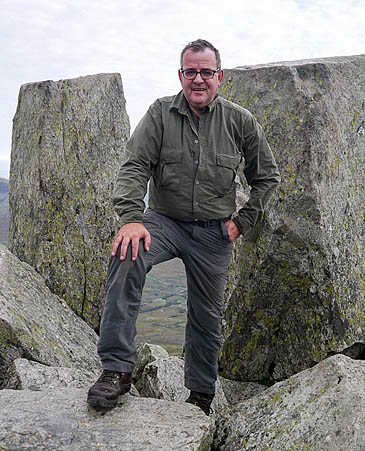
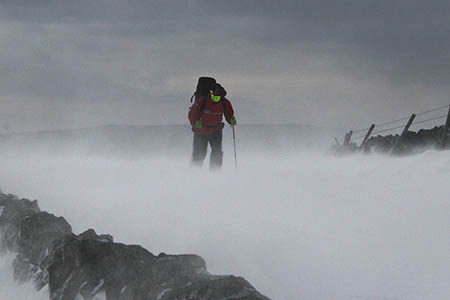
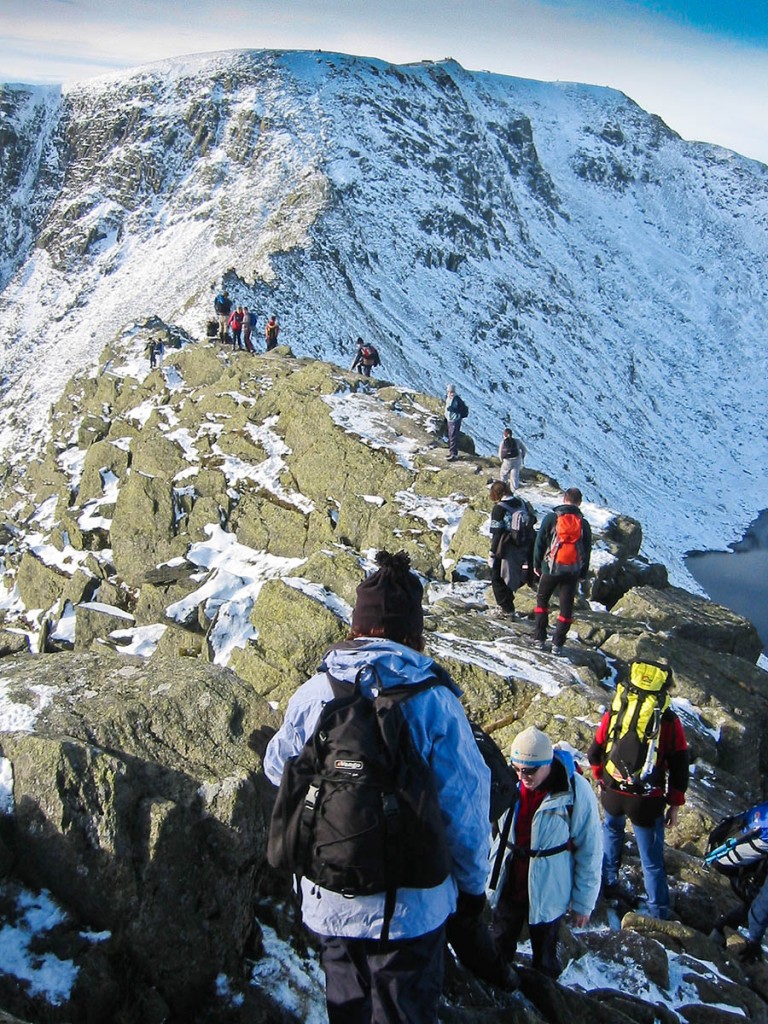
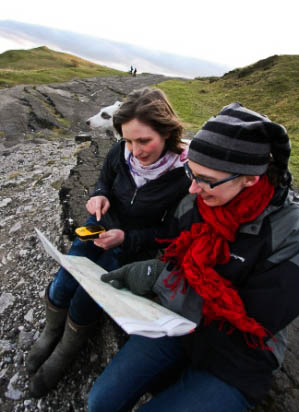


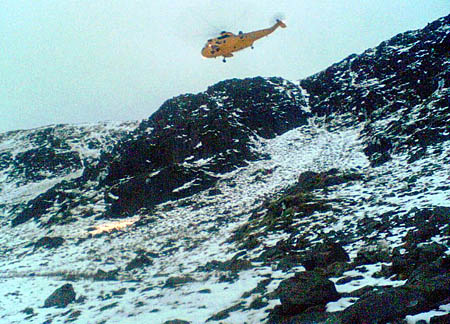
Lenny Cowieson
27 February 2015A very well written article full of good advice, that is the distillation of one man's experience. Living in the Highlands of Scotland I know exactly where he is coming from, unfortunately we hear all to many stories of people coming to grief because in some instances they under-estimate what they are about to do or more importantly do not possess the skills needed to stay out of trouble. I think it is great that the author now belongs to a MRT and is putting back to society what he got from them.
charlie mackinnon
21 March 2015Glad to hear that you have recovered Paul and are getting on with life. I took a leader fall at Cummingston in 1995. I hit the ground, fractured my left thumb, broke my right leg and fractured right wrist however mt worst injury was a serious head injury. My brain haemorrhaged and I spent 30 days in a coma. It's been a long recovery and I still have lots of problems and suffer from epilepsy. It's always good to hear of other people who have survived an accident whilst out on the hill or crag.